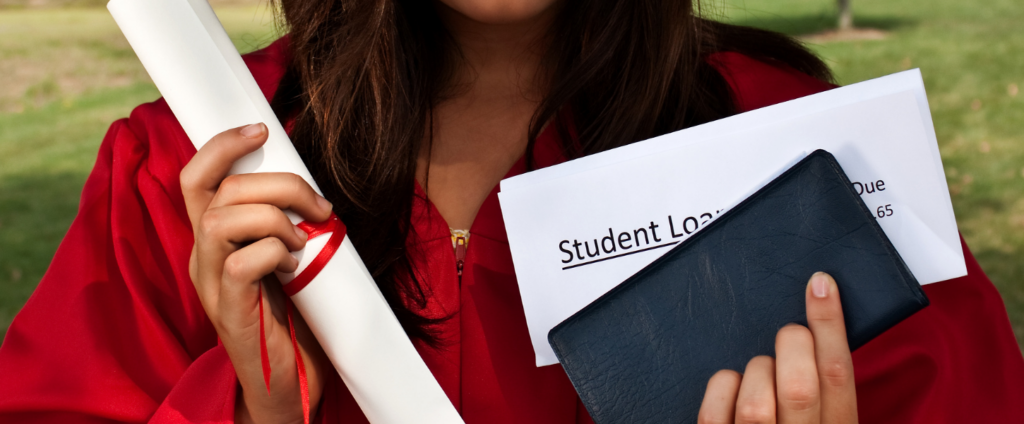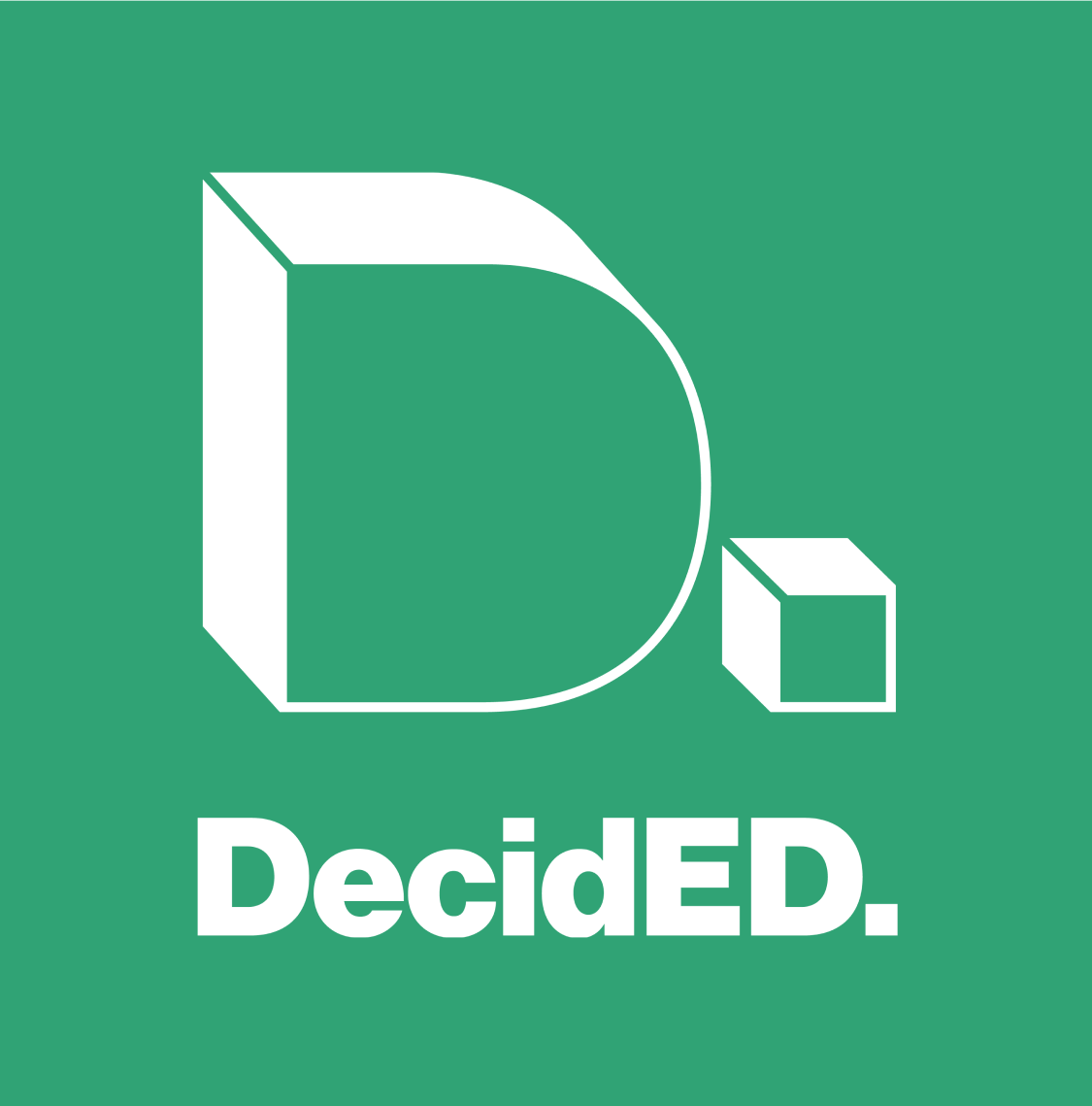Ultimate Guide to Loans
There are many different kinds of loans available to students and each type works differently. Some loans are better than others, so we are here to help you learn about different loans. Once you know all of your options, you can make an informed choice about taking on debt.
What is debt?
Debt is money that you owe to someone else. This can be a person or an institution. When you take on debt, you’ll enter into one or two situations: either you’ll owe the exact amount and will have to pay that back without interest or you will owe more than what you borrowed because of interest payments.
Typically, taking on debt in the form of loans and credit cards means that you will pay back more than what you borrow. That’s because interest rates increase the total repayment cost. Loans and their associated costs impact whether a college can be truly affordable for you and your family.
Tip: As we explore the different types of college loans, pay attention to how much money you will owe for each loan type that you accept.
How do I know which loans I can get?
Check the financial aid section of your college’s portal website to see a list of the loans that you qualify for. Read the loan titles carefully because they can be confusing. Check out our guide to Finding your Financial Aid Award.
How many loans should I accept?
In general, Moneythink recommends taking out no more than $5,500 per year in loans. For most students, this means accepting up to $3,500 in Federal Direct Subsidized loans and $2,000 in Federal Direct Unsubsidized loans.
If you take out up to $5,500 per year in these two loan types, you’ll pay back $360 per month for 10 years after graduating. In order to keep up with those payments, we believe you’ll have to make about $54,600 in your first year after graduating college, depending on your other expenses. You’d probably be surprised by how much money the average student at your college makes after graduating.

What are all the different types of loans?
Below we walk you through all of the different types of loans you might or might not see on your financial aid award letter.
A. Federal Direct Subsidized Loans
Lender: These loans are offered by the federal government to those who demonstrate financial need to help cover the costs of higher education at a college or career school.
Person responsible for repayment: Student
Interest: These loans do not accrue interest while you are in college. Interest accrual won’t start until 6 months after you graduate. This means that when you graduate the total amount due for these loans will be the same as when you first got them. The fixed interest rate for these loans as of July 1, 2023 is 5.50%.
Application process: No additional application is needed. You applied for these loans automatically when you completed the FAFSA.
Repayment timing: You need to start repaying these loans 6 months after graduating from college or 6 months after leaving college.
Deferral: Because these are federal loans, you can apply for a deferral of forbearance that temporarily “pauses” your payments after graduation if you enter into graduate school, a government-run volunteer organization like AmeriCorps, the military, or have economic hardship.
Tip: These are the safest type of loans because of the flexible terms and low interest rates. If you take out any loans, choose Federal Direct Subsidized Loans first before considering any other loan. We also encourage you to max this loan out each year before taking out any other types of loans, to save money.
B. Federal Direct Unsubsidized Loans
Lender: These loans are offered by the federal government loans made to eligible undergraduate, graduate, and professional students, but eligibility is not based on financial need.
Person responsible for repayment: Student
Interest: These loans start accruing interest while you are in college, meaning the amount you have to repay will grow while you are attending college. The good thing about Federal Direct Unsubsidized Loans is that they also have a fixed interest rate of 5.50% for loans disbursed on or after July 1, 2023, and before July 1, 2024.
Application process: No additional application is needed. You applied for these loans automatically when you completed the FAFSA.
Repayment timing: You must start repaying these loans 6 months after graduating from college or 6 months after leaving college.
Deferral: Because these are federal loans, you can apply for a deferral or forbearance that temporarily “pauses” your payments after graduation if you enter into graduate school, a government-run volunteer organization like AmeriCorps, the military, or have economic hardship.
Tip: These are the second safest type of loan. Always maximize your Federal Direct Subsidized and Unsubsidized loans before considering any other loan, to get the best value for your money.
C. Federal Parent PLUS Loans
Lender: These loans are offered by the federal government to help families whose income falls below a certain level.
Person responsible for repayment: It is legally the parents’ responsibility to repay these loans. The loans cannot be transferred to the student later in life.
Interest: These loans start accruing interest immediately, meaning the amount you have to repay will keep growing until the loan is repaid. For Direct PLUS Loans first disbursed on or after July 1, 2023, and before July 1, 2024, the interest rate is 8.05%. This is a fixed interest rate for the life of the loan.
Application process: Your parent must complete an application and have a good credit score to receive a Parent PLUS loan. Because PLUS loans are based on the creditworthiness of the applicants, they are not guaranteed.
Repayment timing: Parents are expected to start repaying these loans while you are still in college, and must apply for a special deferral if they can’t start repaying until you graduate.
Deferral: Unlike federal direct loans, PLUS loans have fewer deferral and forbearance options (for example, repayment cannot be paused if the student enters AmeriCorps).
Here are a few tips if you are considering taking out Parent PLUS Loans:
- Always maximize your Federal Direct Subsidized and Unsubsidized loans before considering this type of loan.
- Before taking out Parent PLUS Loans, check with the financial aid office to see if you can get more Federal Unsubsidized Loans. Schools don’t always list the maximum amount of loans you are eligible for on your portal website, so you may be able to get more than you think.
- If your parents apply for the Parent PLUS loan, be sure to work on a backup plan in case they are not granted the loan. For example, apply to scholarships while you wait for the application response since Parent PLUS loans are not guaranteed.
Tip: If your parent’s application for Parent PLUS Loans gets rejected, the school may offer you additional Federal Direct Unsubsidized Loans instead. Be sure to follow up with your school about this option as soon as you are notified that the PLUS loan application was rejected.
D. Private loans
Lender: Private loans are offered by banks and loan agencies, not the government.
Person responsible for repayment: It depends on the loan, but typically students will either need a parent to co-sign the loan or the parent would have to take out the loans themselves. If a parent takes out a private loan, they can typically transfer this loan to their student later in life.
Interest: The interest rates on private loans are usually based on your parents’ credit score or your own, so the lower your credit score, the higher the interest rate. Private loan interest rates vary widely, ranging anywhere from about 4%-18%. However, unlike federal loans, the interest rate for private loans can be either fixed or variable. If it is variable, the interest rate can increase unexpectedly over time, depending on unpredictable factors such as market trends.
Application process: You or your parent(s) must research loan providers and fill out an application.
Repayment timing: Private loan monthly repayments typically start immediately after taking out the loan.
These are one of the riskiest loan options. Here are a few tips if you are considering taking out private loans:
- Always maximize your Federal Direct Subsidized Loans, Federal Direct Unsubsidized Loans, and Parent PLUS Loans before considering a private loan.
- Before taking out private loans, check with the financial aid office to see if you can get more Federal Unsubsidized Loans.
For private student loans, check out NerdWallet’s 17 Best Private Student Loans as of September 2023.
Tip: If you apply for a private loan, be sure to work on a backup plan for that money. For example, apply to scholarships while you wait for the application response. Even if you get the loan, you may find that the approved interest rate is not acceptable to your family and you will need to cover that gap another way.
E. Payday loans
Lender: Payday lenders
Person responsible for repayment: Typically, you have to be 18 years old and have an income in order to get a payday loan.
Interest: If you do the math, the interest rates on payday loans can be as high as 400%!
Application process: Typically these loans are not hard to get but you will need to give the lender access to your bank account.
Repayment timing: Typically these loans are meant to be for the short term – two weeks. Payday lenders have access to your bank account and will automatically pull money from your account when your next paycheck arrives.
Tip: These loans are often a trap that leave you stuck in debt for a very long time. These lenders are known for trying to take advantage of people who are desperate for cash. You should absolutely avoid taking out these loans!
F. Credit cards
Lender: Credit card company
Person responsible for repayment: Credit card holder
Interest: The better your credit score, the lower your interest rate might be. In general, interest is around 16.5%.
Application process: Fill out an application for a credit card with your credit score and get approved.
Repayment: Credit card bills arrive monthly. You have to make a minimum payment each month but it is strongly recommended that you pay the bill in full and don’t carry over a balance into the next month, to avoid paying interest.
Tip: Credit cards have a higher interest rate than federal loans and may have a higher interest rate than some private loans. Maximize federal loans and research private loans. Using a credit card should be one of the last options you consider.

How do I accept my loans?
Now that you know about the various types of loans, be sure you look out for them in your award letter. You won’t see private loans, payday loans or credit card options in your letter.
Your first college bill will likely be due in July or August. If you plan to use loans to cover part of that bill, you should accept your loans a few weeks before your bill is due. Check out this guide to Getting Your Loans on Time.
What if I can’t repay my loans?
Federal loans offer a variety of different repayment plan options, which can change your minimum monthly payment amount, depending on how much money you are earning or how quickly you want to pay them off.
If you are not able to meet your minimum monthly payments, your loan could go into delinquency or default. Delinquency and default can hurt your credit score. In the worst case scenario, the government could start taking payments for loans that are in default out of your monthly paycheck.If you get really stuck, there are companies that can help with managing your loans after college. Here are a few examples: Student Loan Hero, Sofi, Earnest
What if I’m a DREAMer?
Who is a DREAMer? When it comes to immigration reform, a “Dreamer” (often also spelled “DREAMer”) refers to an immigrant youth who qualifies for the Development, Relief, and Education for Alien Minors (DREAM) Act. As a DREAMer, you will not have access to the first three kinds of loans mentioned in this guide: Subsidized Loans, Unsubsidized Loans, and Parent PLUS Loans. In general, your only option may be private loans.
There is one important exception to this.
Some colleges support DREAMers by offering a special kind of loan that is student-friendly. If your college is offering this type of option, it likely has better interest and repayment options than a private loan. We recommend taking out these loans before considering private loans. Just make sure to double check all of the terms and fees before agreeing to one type of loan over another.
To learn even more about loans, check out Nerdwallet and the Federal Student Aid page.








